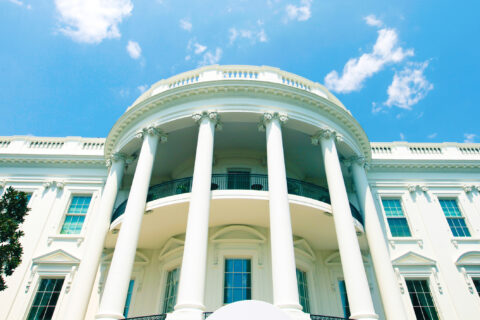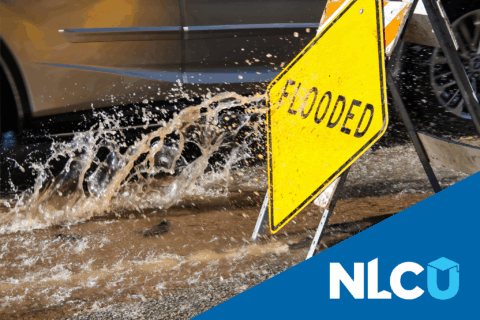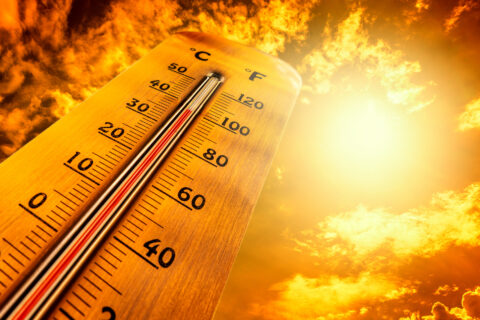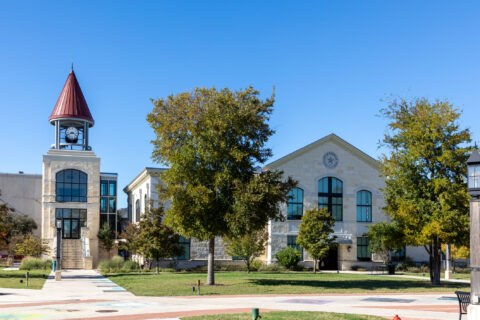The pandemic and the many extreme climate events we have endured over the past two years have illuminated the critical role that infrastructure plays in our cities. I’m not talking about the grey hardscapes of pipes, powerlines, bridges, or streets – I mean green infrastructure, which is equally as critical and abundantly less costly: parks, green roofs, rain gardens, trees and permeable pavement. All are vital and effective tools for making our urban landscapes healthier, more climate resilient and stronger in the long term.
Our innate affinity for nature, known as biophilia, is emerging in urban areas hungry for outlets where we can relax, improve our mental and physical well-being, exercise and socialize. Our mere exposure to trees and green space lowers rates of depression, heart disease, stroke, obesity and stress. Nature heals us when we give it a chance.
By investing in both small and large-scale green infrastructure projects, communities can address environmental concerns while transforming grey, urban landscapes into verdant, vibrant ecosystems – all while reducing costs to cities and property owners and providing green spaces for residents. Green roofs weigh as little as 15 pounds per square foot and in only a three-inch profile can support wildflower meadows, pollinator gardens, vegetables and more.
Let’s break it down:
1. Green Roofs Help Cities Save Money
Acting as giant sponges, green roofs soak up stormwater during rain events and reduce the workload of traditional gray infrastructure such as combined sewer overflows. Using a holistic design process, green infrastructure may be folded in as cost-effective solutions for both new and existing buildings in the private and public sector to reduce overall impacts on critical infrastructure. The U.S. Conference of Mayors found that “on average, municipalities spend between six to seven cents of every tax dollar on water and sewer systems, making water infrastructure the third-largest expense for cities, after education and emergency personnel.” Cities such as Nashville, Philadelphia and New York are adopting policies that encourage the construction of these systems as necessary components of their water infrastructure.
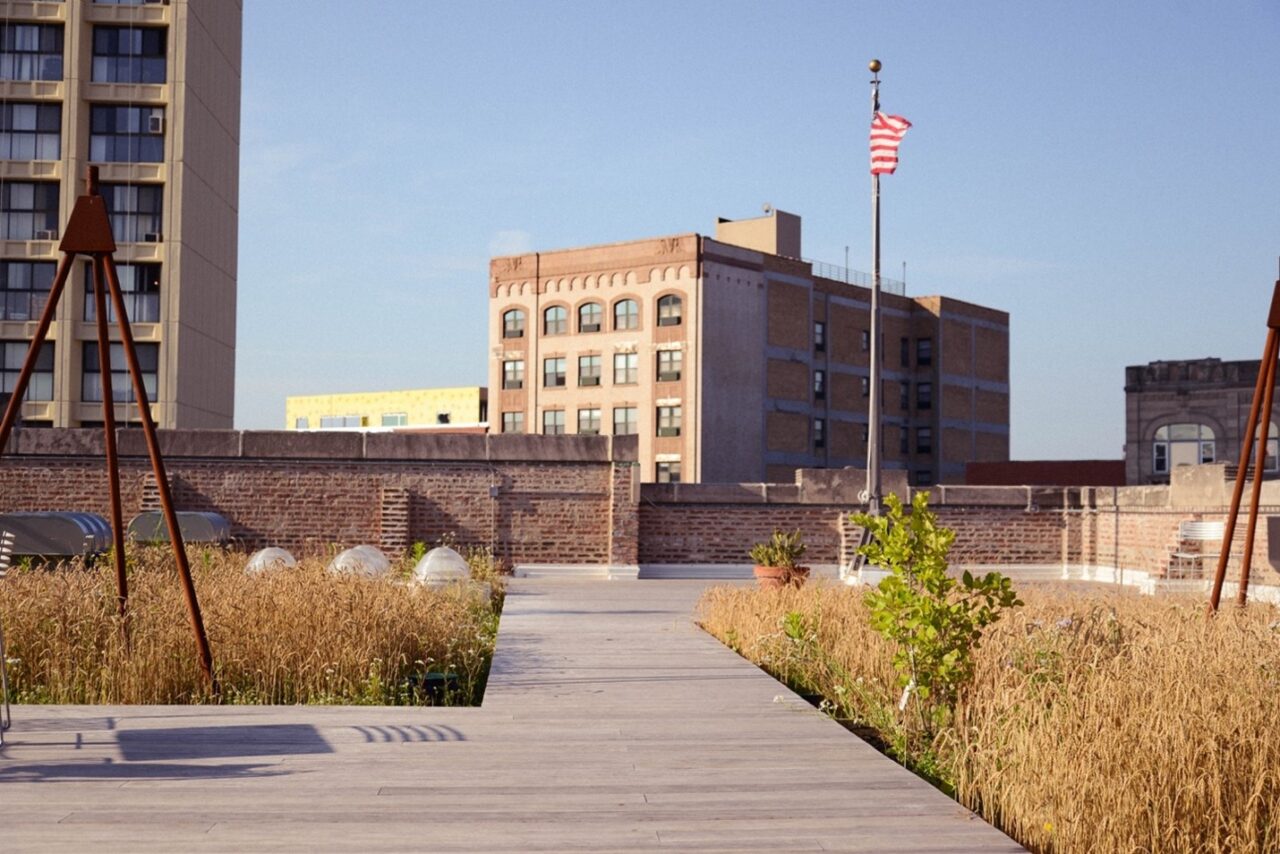
2. Green Roofs Provide Environmental and Health Benefits
Heat waves and sustained periods of high temperatures are increasing in intensity and frequency. This impact is particularly pronounced in urban areas with less trees or green space, exacerbating environmental justice issues. According to the Union of Concerned Scientists, “the United States is facing a potentially staggering expansion of dangerous heat over the coming decades.” Green roofs cool cities down and they change the surface temperature of roofs and the surrounding air through both evapotranspiration and reducing the albedo of rooftops. Studies indicate that this protects the roof membrane, potentially doubling its lifespan.
The vegetation on green roofs lowers temperatures which, in turn, reduces the production of harmful particulate matter and ozone, improving local air quality. In Kansas City, green roofs provided short- and long-term health benefits and reduced health care costs — issues that are of particular concern during the pandemic.
3. The Private Sector Benefits from Green Roofs
Green infrastructure projects can provide a solid return on investment for building owners by reducing and potentially replacing costly stormwater management systems. In Indianapolis, a local non-profit called Keep Indianapolis Beautiful (KIB) installed a green roof comprised of Indiana prairie flowers, which added pollinator habitat and increased the structure’s capacity to manage 360,000 gallons of rainwater on their roof—storage which might have otherwise required a costly in-ground cistern system. Green roofs have been integrated into buildings of all shapes and sizes in Chicago, Minneapolis, Nashville, New York City, Boston, District of Columbia, San Francisco, Indianapolis, Philadelphia, Fayetteville and more.
Simultaneously, green infrastructure can reduce building energy costs by insulating buildings in winter and keeping them cool in summer months, presenting long-term operational savings for building owners and creating attractive amenities for tenants.
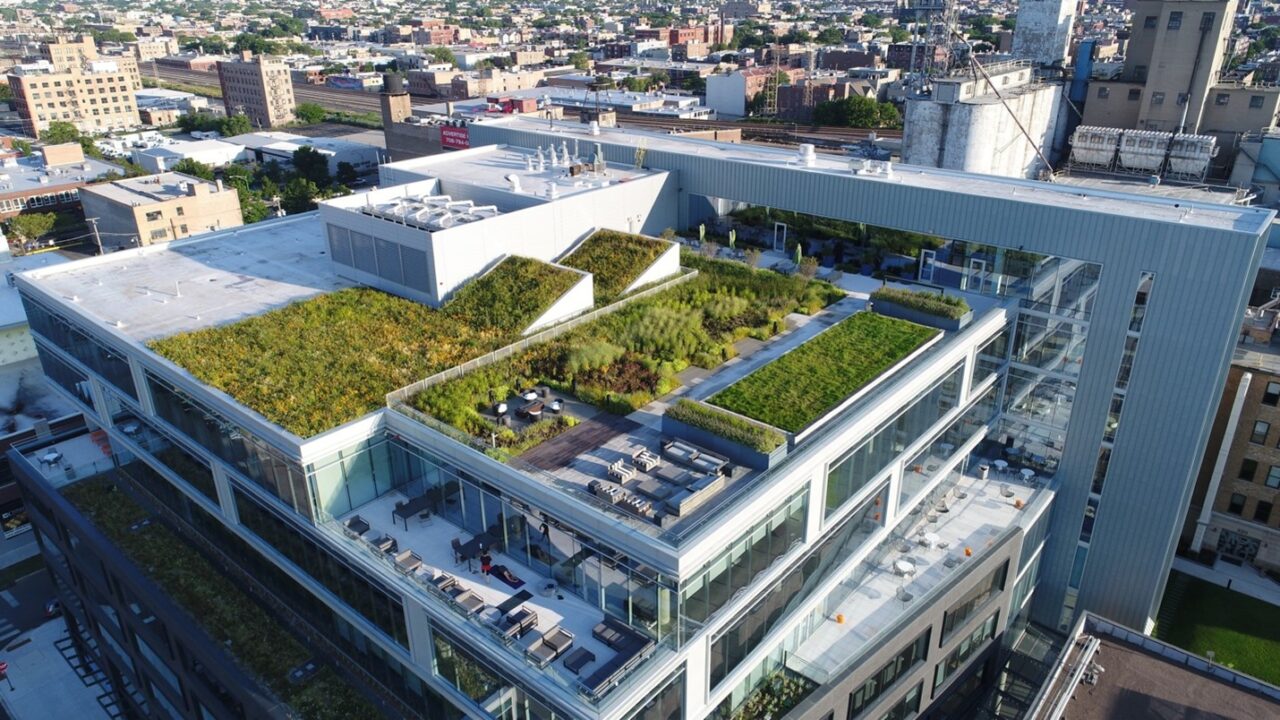
Architecture and urban planning firm Studio Gang, in collaboration with Omni Ecosystems, designed and cultivated a wheat prairie rooftop at its Chicago headquarters. The green roof at Studio Gang Architecture was transformed into a wheat field where children could practice local agriculture in the Chicago After School Matters program. Illinois’ ecological history, native prairies and wheat fields inspired this roof’s design concept. This ecosystem was designed not merely for one point in time or seasonal high point, but with a complete vision for its ecological succession. In this spirit, the native prairie was seeded with a winter cover crop of wheat. The byproduct was a healthy crop of amber waves the following summer, which local students in an after-school program hand-harvested. Professional millers ground the grain, and a Chicago bakery baked the flour into cookies that students sold as a fundraiser. The initiative marked the first-known rooftop grain harvest and was publicly recognized by Chicago Mayor Rahm Emanuel.
The social engagement this green roof enabled created unique value for the community by uniting disparate stakeholders, while the wheat harvest became a seminal forum on local environmental issues. It also highlighted the benefits of a green roof built specifically for the property owners but whose use extended to the whole community.
“With more than fifty species planted on top of a historic building, our mini prairie functions more as a thriving ecosystem than a green roof, creating food and habitat for birds, butterflies, insects, fungi and now people.”
Jeanne Gang, Studio Gang
With local government support through rezoning, incentives and other mechanisms to encourage these practices, building owners can work with green roof professionals, designers and residents to create more of these installations that offer many benefits in communities. Given the chance, nature-based solutions like green roofs can adapt to the unique conditions of a single location, and over time, become the best versions of themselves.
Bring Green Roofs to Your City
Organizations such as The Green Infrastructure Foundation offer resources such as the Living Architecture Performance Tool, for designers, building owners, maintenance professionals and policymakers looking to integrate green infrastructure systems into their cities.

About the Author:
Jesse Rosenbluth is the Director of Business Development at Omni Ecosystems.

